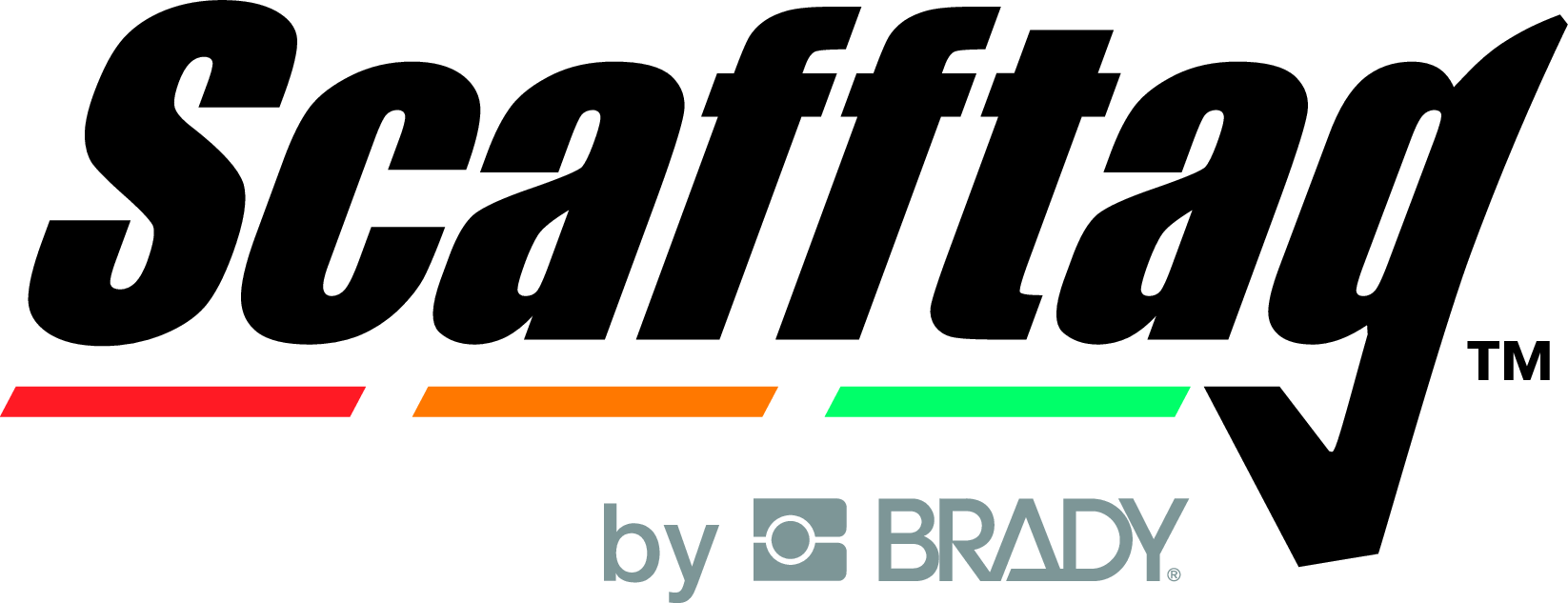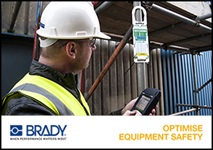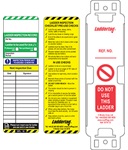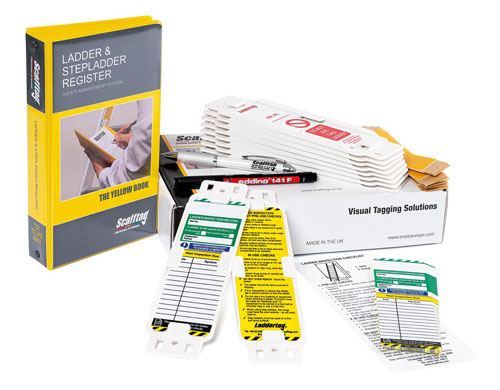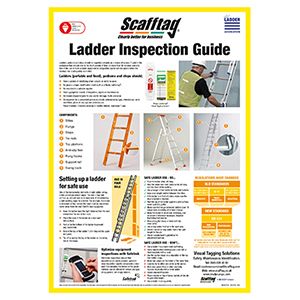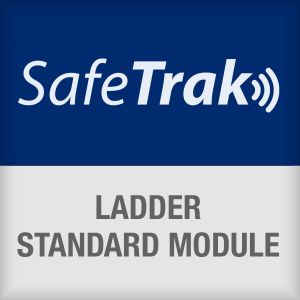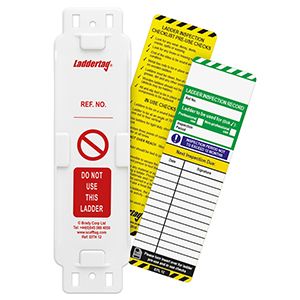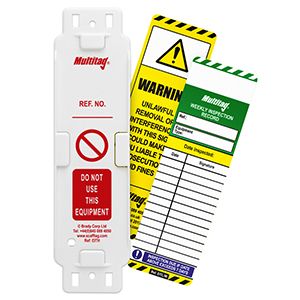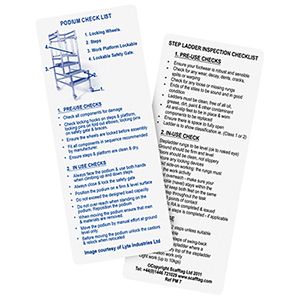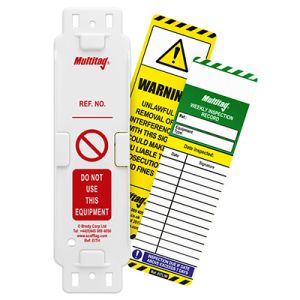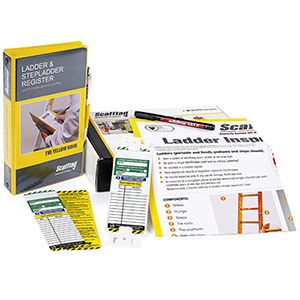Laddertag inspections at Kew Gardens to ensure safety
Challenge: Safely work at height
Working at height is an everyday occurrence for the horticulturalists and maintenance staff at Kew Gardens [link website?]. However, with a complement of 3 glasshouses, 5 minor houses and 2 nurseries together with a variety of spectacular events and displays including the Summer Swing Music Festival, Summer Festival and Orchid Festival that occur each year, they have a challenge on their hands.
How do you safely work at height around plants that do not grow uniformly, come in all shapes, sizes and weights and live in 200 year old glass houses that were not built with health and safety in mind?
Phil Griffiths, Head of Glasshouses at Kew Gardens explains how he juggles safe working at height, health and safety legislation, unruly plants and a demanding public by working closely with equipment status management specialists, Scafftag.
Falls from height still remain the most common kind of accident to cause fatal injuries and in 2007/08 falls from ladders resulted in 16 deaths and 1146 major injuries, amounting to over a quarter of all major injuries as a result of a fall from height.
In recent years there appears to be a fine line between the practical application of health and safety rules and an extreme over-cautiousness in everyday life. Life is never risk free, however employers and employees have a responsibility and a duty of care to ensure that all work practices are carried out as safely as possible, following a detailed risk analysis. This approach is being echoed by Lord Young of Graffham who is conducting a Whitehall-wide review of "the operation of health and safety laws and the growth of the compensation culture. This will look at the way health and safety rules are being applied. David Cameron said "We need a sensible new approach that makes clear these laws are intended to protect people, not overwhelm businesses with red tape.
Solution: Inspections with Laddertag
The Health and Safety Executive's message is clear - ladders should only be used for low-risk, short-duration work and can be used if, after assessing the risks, the use of more suitable work equipment is not justified because of the low risk and short duration.
Ladders can also be used for low risk work where there are features on the site that mean a ladder must be used. Phil embarked on a process of investigation for such a safe system and identified Scafftag as specialists in this field. Scafftag was already supplying other departments within Kew Gardens and once I saw the system my immediate thought was - I don't need to go anywhere else. This is safe and simple and will do exactly what we need. Scafftag works with its clients to introduce systems and procedures that help manage and communicate the changing status of equipment regarding safety, maintenance and identity/location. As a general rule Scafftag advises that ladders, podiums and steps should be regarded primarily as a means of access and that if used, should only be used for short periods and when other suitable equipment is not appropriate.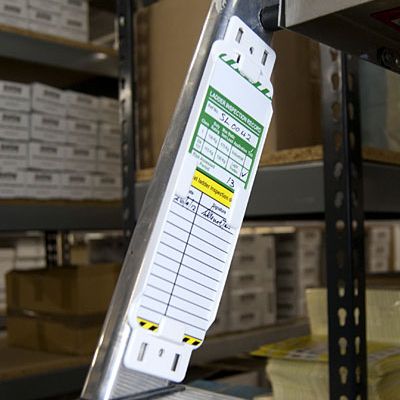
However, the requirements at Kew Gardens are quite unusual and in some cases ladders are the only way to be able to carry out some of the work. So the horticultural department uses a variety of safety systems to clearly identify whether a ladder is safe to use or not. These include Laddertag which displays the latest information relating to a ladder's class, inspection period and inspections due as well as a handy, quick-reference ladder inspection checklist; Microtag, an inspection tag for steps and stools; the Towertag system that ensures the latest status of mobile towers are instantly visible at the point of use - showing location and move references; and the Yellow Book that collates all the elements required to manage ladders onsite. Phil explains that the introduction of the range of Scafftag products enables people to ensure best and safe practice is maintained. The Scafftag systems put the onus on the person - they have to be aware of it and the responsibility is passed on to anyone using the equipment. The people using the ladders can vary day to day and the Scafftag products ensure that the inspection status of equipment is communicated at all times. And when audited, all the information is contained in one place and is up to date - it's a neat little system.
Abi Piper, Sales Representative at Scafftag works with Phil and regularly visits Kew Gardens to make sure that everything is running smoothly as well as training any new staff so that they are fully conversant with the Scafftag products. Phil said of the service "It's excellent. It's really helpful to work with someone who knows the products and can give advice if needed. Abi explains and demonstrates the products to the team here and links the importance of the systems to the legislation we have to adhere to. This type of explanation helps people understand the importance of respecting the ladder safety systems and using them at all times.
This new approach to safe practice when working at height that has been introduced at Kew Gardens with the help of Scafftag is a perfect example of how a risk, once identified, can be managed safely and effectively without interfering with or preventing the day to day activity that is essential to an organisation such as Kew Gardens. This approach mirrors the approach being considered by the new coalition government where a system is proportionate and not bureaucratic and in the words of David Cameron presents a sensible new approach that makes clear health and safety laws are intended to protect people, not overwhelm businesses with red tape.
